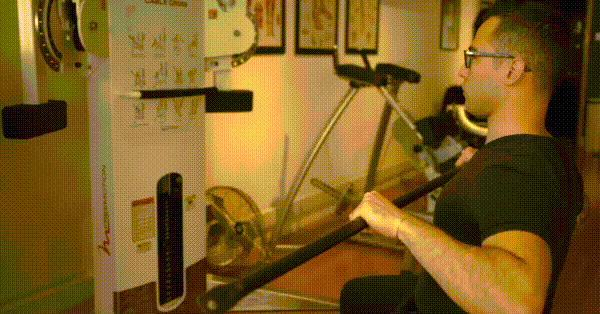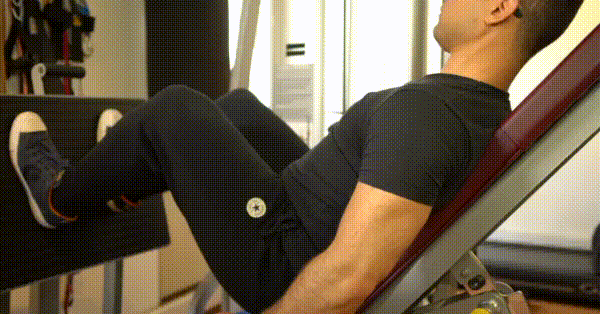What is the proper way to perform any exercise?
They say: “You must go full range of motion.”
We say: “Of what? And why?”
We believe that before we dictate what an exercise should look like, we need to understand two key variables:
- Who are we talking about?
- What is their goal?
Rather than follow the “rules of the exercise,” we follow the “rules of the body.”
Common Myths
What do we mean by rules?
Whether it’s in a popular magazine, in a book or on YouTube, or in a textbook that is aimed at exercise professionals, we can see the rules all over the place:
- The squat is the best exercise to develop big legs
- We need to do Olympic Lifting to develop power
- 4 x 8 reps is the magic sauce for all your fat-burning-hypertrophy-athletic needs.
And each exercise has similar rules too:
- Your arse must touch the grass
- The bar must touch your chest
In other words: you must go full range of motion
Why do we have these ‘rules’?
The rules exist for a few reasons. But for the purpose of this article, let’s focus on one: “standards.”
Sport
Most sports are measured externally. Meaning, we have the 100m marker on the track, or the 100km marker, or a height, a length, an amount. Something external to measure ourselves against.
If we look at a power-lifting competition and look at the bench press, we would see certain rules that every competitor would have to meet. For example: “the bar must touch the chest.” And with good reason, how else would you compare individuals? Just like we need to know when the race on the track ends, we need to know the parameters of the bench press.
There have to be standards in place.
Exercise Education
Standards exist in the education of exercise professionals too.
We don’t start by understanding each piece of the body and building exercises that are perfect. Certainly not during our “6 weeks of education to become a personal trainer.”
To get trainers up to a proficient level of delivering generalised exercise, which is generally acceptable, we are taught the rules of the squat, bench press, lat pulldown, etc.
What’s the problem with rules?
Generalised rules, by definition, are not based on the individual.
The individual presents a wide array of different architecture:
- Rib cage size and shape
- Sternum length and angle
- Humerus / Forearm length
- Muscle thickness
Plus, the ability to get into and maintain positions at the spine, scapula and more.
We see a lot of variability, which means the standards only work for some individuals.
Therefore, if you wish to compete in powerlifting, the first phase of your training plan has to be choosing your parents wisely. Your genetic makeup dictates your structure and architecture. The next phase is enhancing within your window of opportunity.
But if your goal is improved health and fitness?
We need to build exercises that fit your body.
Let’s start with range of motion.
What is Range of Motion (ROM)?
For a term that is thrown around, it would be useful to clarify what the term means. We know there are many versions of ROM, including functional, passive, and active ranges. And it’s this last one, active ROM, that we are on the lookout for.
During a movement, the brain dictates how far a joint goes by controlling the muscles around a joint. This is your active ROM.
If an external influence pushes it further (this could be a dumbbell, or your other arm, or gravity), we would call this passive range of motion.
There are many reasons why your brain may be choosing not to go to a particular range. It could be due to your structure, weakness, injury, and more.
We’d suggest seeking out a skilled exercise professional or physiotherapist to help figure this out with you. But in the meantime, let’s look at some of the ways you can make exercise fit your body and stay within the limits put in place by your brain.
We need to introduce a new term. Coined by Tom Purvis, the founder of the Resistance Training Specialist program, Exercise-Specific Active Range of Motion is quite literal in its meaning. It’s your active ROM specific to an exercise.
How To Assess Your Exercise-Specific Active ROM – Examples
Let’s look at two standard exercises, and over the coming weeks and months, we will share more examples over on our Instagram channel.
Bench Press
When you are laid on your back performing the bench press, the bar is driving your arms down. Gravity has the potential to push your shoulders too far.
Therefore, sit upright, grab a stick and perform the same motion.
Where the bar stops, is your active limit.
When performing the exercise, don’t allow the bar to go further than this point.
Leg Press
All leg press machines are essentially the same: you push them apart, and it squashes you back together. We want to make sure it doesn’t squish you, in particular, your hips, too far.
When in the bottom position, attempt to lift your leg away from the platform.
If you can, you are within your active limit.
If you cannot, you’ve exceeded it and you’ll need to adjust the machine.
Active ROM – In Practice
There is no glory in exceeding the tolerance and limits of your body, both in place to protect you. With that in mind, we are going to suggest that for every exercise you perform, you stay within your active range of motion.
We’ll share many more examples over the coming months on our Instagram channel. If you’d like more in-depth information, pop your details below to sign up to our mailing list.

